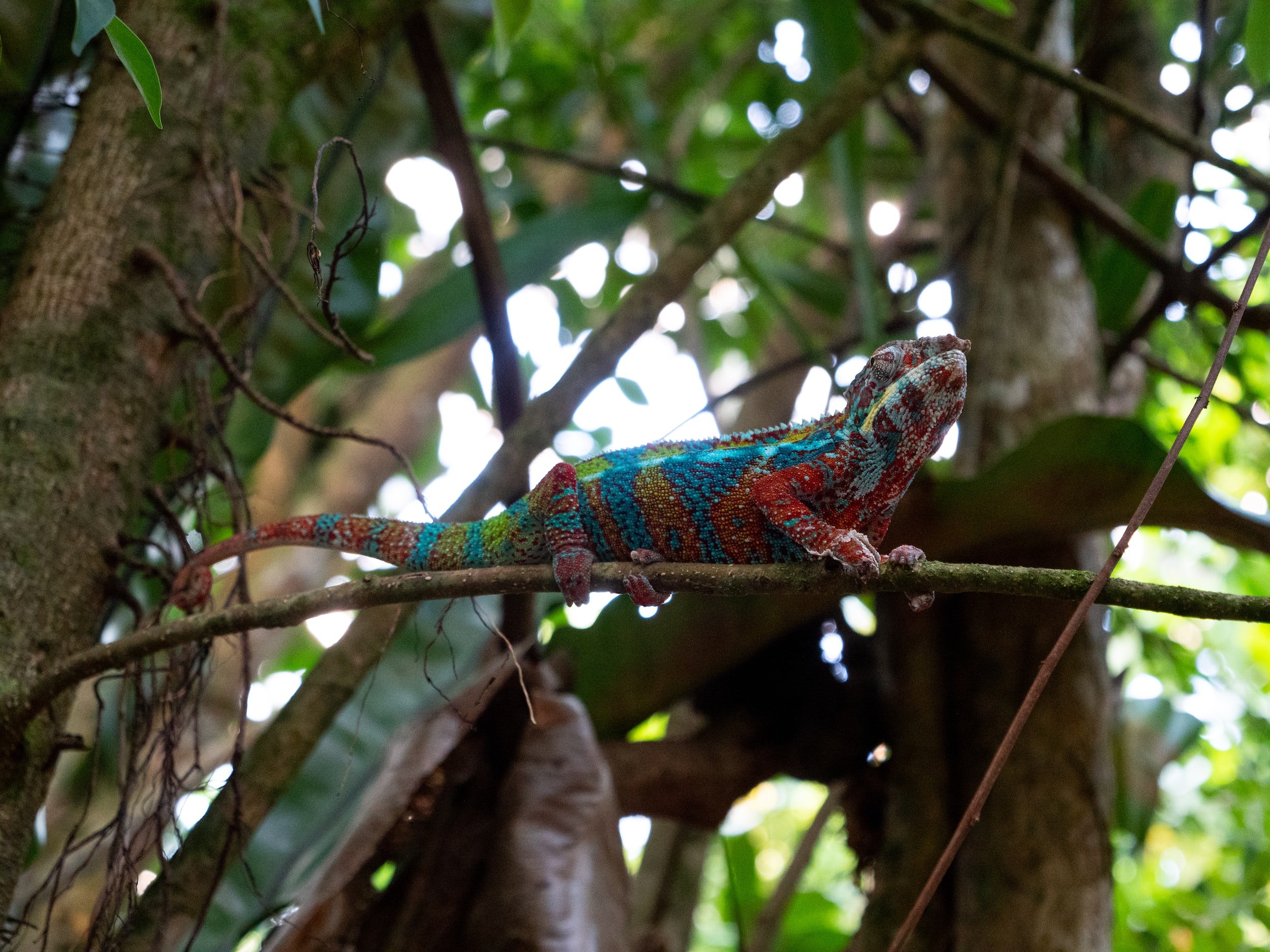
PANTHER CHAMELEON HUSBANDRY GUIDE
MADAGASCAR: Home of the Panther Chameleon
Like the great Baobab tree, the web of chameleons is expansive. From the large Parsons to the tiny Brookesia, chameleons hold a wealth of beauty, history, and lore. Panther Chameleons originate from the islands of Madagascar, a part of the continent of Africa. Each type of panther chameleon is named according to its locale (the area it is from). The unique colors of a panther chameleon tell us what locale they belong to. Chams from the Nosy Faly locale for example have red spots covering a beautiful combination of white and teal-blue bands. As a whole Panther Chameleons are of the same species, Furcifer Pardalis. Their locale/name specifically relates to which island/area of Madagascar their lineage comes from. Nosy Faly Panther Chameleons come from Nosy Faly island.
In their homeland, the individual locales don’t mix, often separated by water or terrain. This creates beautiful pockets of chameleon rainbows. The most common locale in the US is Ambilobe but there are so many others. I mostly focus specifically on the Nosy Faly locale.
The climate of Madagascar is subtropical, with a hot and rainy season between November and the end of March (summer), and a cooler dry season from May to October (winter). The west coast is drier than the east coast, whilst the far south and southwest is a semi-desert region that experiences very little rainfall. Panther chameleons are found in the eastern and northern parts of Madagascar in a tropical forest biome.
As reptile keepers, we try to mimic the natural habitats of our animals the best we can. It’s a tough job trying to fit a tropical forest into a 2’x2’x4’ space. Sun, heat, humidity, hiding spots, places to lay eggs, opportunities to climb, opportunities to hunt, eat, drink, and sleep…it’s a complex system yet so much simpler than it seems. The good news is that you don’t have to go into this blind. There is a rich history of folks, testing and failing and honing the perfect husbandry needed to help our animals thrive. Create the perfect slice of Madagascar in your 2’x2’x4’ (or larger) space and watch your chameleons thrive.


